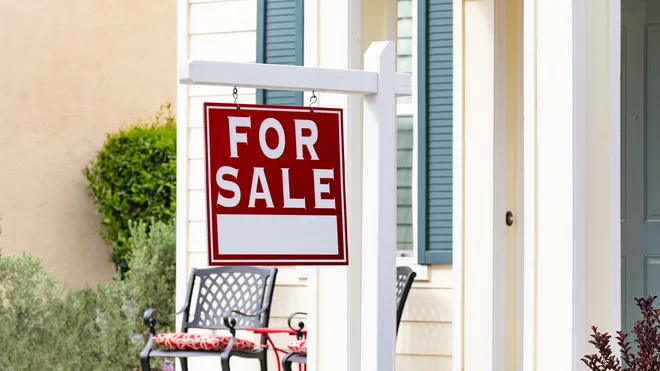Inflation is trending down. Try telling that to the housing market.
Last spring, Rosaline Tio and Dave Hung decided it was time to move. The couple, in their late 30’s, had owned a townhouse in Atlanta since 2017, but Dave’s commute was starting to feel long and the house, now also home to a four-year-old and a toddler, a bit cramped.
The house hunt was hard. “The neighborhood we liked the most was on the higher end of our budget,” Tio said. “If it was a good house, it went quickly.”
Pricey properties weren’t the only concern. Elevated mortgage rates were also “a huge factor,” Tio said. The rate they’d pay to borrow in 2024 would be more than double the one on the mortgage for the townhouse. “I guess it’s just a sign of the times. It’s what you have to do,” she said – but it felt uncomfortable.
More:Homeownership used to mean stable housing costs. That's a thing of the past.
Finally, the couple hit upon a solution that was unorthodox, but which seemed right. They moved their family into a house for rent in the area they wanted, and became landlords, leasing out the townhouse to a tenant. The decision to rent saved them nearly $2,000 a month compared to the properties they had been trying to buy.
Buy that dream house: See the best mortgage lenders
“We’re in a new area, and it makes sense to feel it out before buying,” Tio said. “Financially it felt a lot more comfortable than trying to buy at the top end of our budget.”
Housing Inflation Won't Quit
Inflation overall is trending lower, but the housing market is a notable exception.
Among all the expenses that make up the consumer price index, shelter costs were among the biggest gainers in September, the Labor Department said Thursday: up 4.9% compared to a year earlier.

In August, the average mortgage payment for existing homeowners hit a record high of $2,070, data provider ICE reported on Monday. That’s up 7.2% from the same time last year.
“Even accounting for rising incomes, it now requires ~30.7% of the median monthly U.S. household income to make the average mortgage payment, the highest relative share since June 2015,” ICE’s report said. For house hunters in the market now, the mortgage payment required to purchase the average priced home as of mid-September was $2,215, or 32.9% of median income, versus roughly the average of about 25% over the past four decades.

Homeownership is harder
Tio and Hung were lucky: the home they bought in 2017 will continue to appreciate and allow them to accumulate home equity. Higher prices across the housing market are keeping many Americans out altogether.
Nicholas Martin, who owns Buyer’s Choice Realty on the north shore of Massachusetts, calls the market “stagnant.” It feels like everyone is in a wait-and-see mode, Martin said. He suspects it will take mortgage rates in the 5% range before homeowners feel comfortable listing their homes for sale.
As of mid-summer, 84.2% of homeowners were already locked into rates below 6% and 74.6% have a rate below 5%, a Redfin analysis for USA TODAY shows. In early October, the 30-year fixed-rate mortgage averaged 6.12%, according to Freddie Mac.
See also:Buying a house? Four unconventional ways to become a homeowner.
“I think we are happy with this situation for now,” Tio said. “It was one of these realizations: growing up, the ideal was always to buy a house, and we started thinking, why is that? We’re happy renting this as long as they want us. It’s plenty space. It’s far bigger than any house we could have been able to buy, and the boys have a lot of room to continue to grow. It really checks all the boxes.”
Disclaimer: The copyright of this article belongs to the original author. Reposting this article is solely for the purpose of information dissemination and does not constitute any investment advice. If there is any infringement, please contact us immediately. We will make corrections or deletions as necessary. Thank you.







